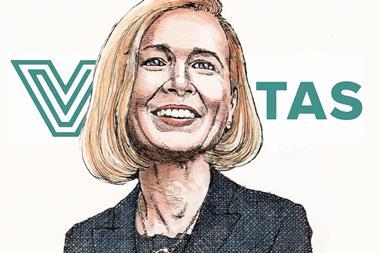UK - Canada Life is now offering annuity protection across all of its conventional annuity products, not just enhanced annuities, which would give dependents a lump-sum payment if the policyholder dies before they are 75.
Annuity protection is sometimes offered by providers on enhanced or impaired life annuities, where the policyholder suffers from specific health problems, however this is the first time the protection has been extended to standard lifetime annuities.
The protection allows policyholders to protect anything between 0.1-100% of the initial purchase price, so if they die their chosen beneficiaries receive a lump sum of the original premium - say £100,000, minus the number of years of income which had already been paid by Canada Life.
The cost of the protection varies depending on the age of the client purchasing the annuity, as for a 50-year-old male or female the annual income from their purchased annuity would be 1% lower with the protection, while for a 65-year-old female the cost would be a 3% drop in income, compared with a 5% drop for a 65-year-old male.
That said, if a client purchased a joint-life annuity with protection - where the lump sum would be paid out on the death of the second annuitant - then the cost would be a fall to 0.1% for a 50-year-old ranging to a maximum of 0.4% reduction for a 65-year-old.
Peter Gould, annuity relationship manager at Canada Life, pointed out the cost of protection for a couple is lower because the chances of them both dying at the same time are much lower.
However, the protection only applies if the annuitant dies before the age of 75, so if a 50-year-old purchased protection but lived until 76 the dependents would get nothing.
In addition, while Canada Life confirmed the policy had been set out so the lump sum is paid directly to dependents to avoid inclusion in the deceased's estate for inheritance tax (IHT) purposes - in a similar way to occupational pension schemes death benefits by using a nomination process - the lump sum would still be liable to a 35% tax charge.
Gould said the charge is levied by HM Revenue & Customs (HMRC) as a one-off payment to offset the tax it loses from the annuity no longer being paid annually and being taxed under the Pay-As-You-Earn (PAYE) system.
John Occleshaw, executive director of ife and pensions at Canada Life, said: "Some annuitants are concerned about losing their hard-earned pensions savings to the insurance company if they die. Annuity protection provides them with the peace of mind that their investment is not lost but can be paid as a lump sum to their dependants in the event of their death."
Under UK law, pensioners with defined contribution schemes or private pension plans can defer their pension or go into an unsecured pension, or drawdown, until the age of 75.
However, they must take their pension income in the form of an annuity once they reach 75, or move into an alternatively-secured pension (ASP) which is more flexible but results in large tax charges of up to 90% on any residual funds which are passed on to dependants.
The pensions industry, and opposition political parties such as the Conservatives, have lobbied the government to remove compulsory annuitisation at 75, however the government has refused to change existing requirements.
If you have any comments you would like to add to this or any other story, contact Nyree Stewart on + 44 (0)20 7261 4618 or email nyree.stewart@ipe.com












No comments yet